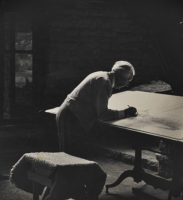Inside Orhan Pamuk's Museum of Innocence.
Pinned and labeled like butterflies in a wall-mounted shadow box, 4,213 cigarette butts welcome visitors to the Museum of Innocence, writer Orhan Pamuk's present-day Wunderkammer in Istanbul. The stubbed-out specimens were smoked by a woman named Füsun, the wall text tells us. And like the other objects in the museum, they were collected by her former lover, Kemal. Rejected by her, a heartsick and obsessive Kemal began pilfering everyday objects connected to Füsun, amassing this beautifully melancholy collection.
But the story behind the Museum of Innocence, like the Nobel Prize–winning writer's 2008 novel of the same name, is an invention. Füsun and Kemal are characters in the book.
Spread over four floors of a late-Ottoman townhouse, the museum, which opened last year, contains a rambling archive of mostly real quotidian objects from Westernized, bourgeois life in late-20th-century Istanbul. The author refers to it as a parallel telling of the novel's story–a physical museum that embodies a fiction.
“The building is the first piece of the collection,” says Pamuk. He acquired the formerly rundown 1897 house in 2000. Over the next 12 years, the author, who briefly studied architecture before turning to writing, worked with Istanbul-based architects Ihsan Bilgin and Cem Yücel, as well as the German firm Sunder-Plassmann Architekten, to restore and convert it.
The architects added a steel skeleton to shore up the structure against earthquakes–an ever-present threat in Istanbul–and excavated a neighboring concrete yard to create a below-grade museum store. They gutted the interiors, opening an atrium through the center. “For me, the Guggenheim in New York is the ideal museum space because you not only look at the objects but also the others who are looking at the objects,” says Pamuk. “As I was finishing the novel, I incorporated that idea into my character's thoughts about his museum.”
Pamuk arranged the collection in narrow wooden cabinets, which recall Joseph Cornell boxes, and each of the 80 displays serves as an illustration or ideogram for one of the book's chapters. They have an uncanny quality for visitors familiar with the novel, but the dioramas also have an evocative power that stands alone; the most comically moving is an old medication advertisement painted over as “An Anatomical Chart of Love Pains.”
Pamuk arranged the collection in narrow wooden cabinets, which recall Joseph Cornell boxes, and each of the 80 displays serves as an illustration or ideogram for one of the book's chapters. They have an uncanny quality for visitors familiar with the novel, but the dioramas also have an evocative power that stands alone; the most comically moving is an old medication advertisement painted over as “An Anatomical Chart of Love Pains.”
The novel's protagonist is inspired by the Musée Édith Piaf in Paris, Sir John Soane's Museum in London, and other small museums created by a single personality. Like them, Pamuk's collection preserves relics of life in a particular place and time with a palpable intimacy. But by making the real objects that it houses players in a fiction, the writer's project illuminates the storytelling involved in all acts of collecting and conserving. “State-sponsored history connects the objects and works of art in big national galleries,” he says. “Here, we are saying a simple love story connects these things.” The Museum of Innocence shows how un-innocent our presentations of the past can be–how we always have a narrative at work on the objects and buildings we choose to preserve.






